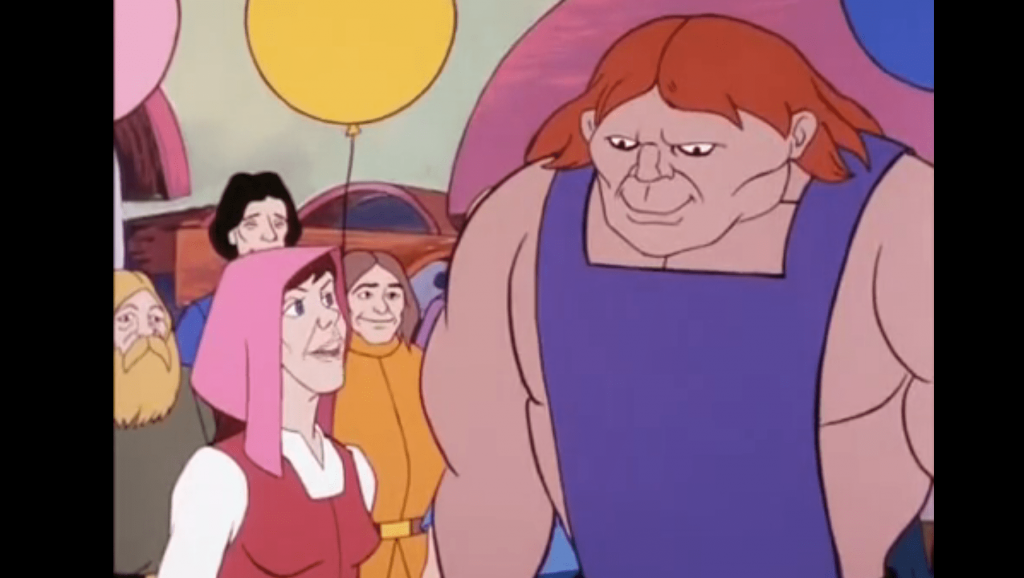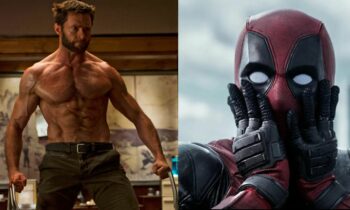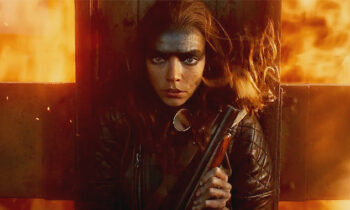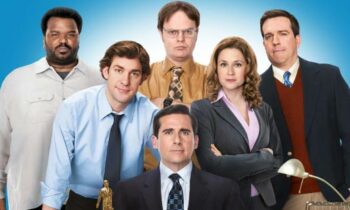He-Man Is A Gay Icon And A Treasure
For a long time, queer kids had virtually nothing in terms of relatable, deliberate role models on tv. Even cartoons were rampantly heterosexual. The characters that were allowed to be somewhat relatable to queer folk were, for the most part, portrayed as villains, degenerates, or that weird guy standing near the playground with a jazz cigarette. You didn’t want to be gay on tv. But then He-Man and the Masters of the Universe debuted, and wowzers not one second of that show was straight. He-Man is a gay icon, and let’s look at why because this show is very, very queer.
The He-Man, the He-Myth, the He-Legend
To break down what makes He-Man a gay icon, we can just list some completely true features of the character. Prince Adam has a secret identity he can only tell to his closest companions. His mother eventually learns, but she is supportive, if a little worried about the kinds of things Adam is doing and where he’s swinging his sword. Adam wears lavender spandex, and lavender happens to be strongly associated with queer history and was even an open symbol worn to show Pride. The intro sequence describes He-Man’s powers as “fabulous” and “secret.” The word fabulous has been associated with LGBT folk for a while, and so has the general concept of camp and flamboyance in television. Adam has a full transformation sequence and a flare for the dramatic. He’s campy, just like every other second of this show. Adam transforms because of his relationship to his sword. There might be a lot of symbolic interpretations of swords in literature, but ignoring the obvious is a deliberate phallacy.
 Image via Mattel
Image via Mattel
In the 80s series, Adam’s transformation is just him taking clothes off. Music plays, lights flash and then he’s mostly naked. It’s a lot of animation to just say he got much closer to nudity. And he’s wearing a harness. He-Man’s most iconic apparel is a big ol’ harness. This man has just seized his sword, thrust it, stripped, and on his borderline-nude body is a harness. And a fur loincloth. He-Man, the gay fashion icon we never deserved.
Though He-Man and Prince Adam do have love interests, none are fully realized and reciprocation is very limited. Teela clearly has a crush, and there’s a bit of chemistry between Adam and Mara, but the romance never develops. This is in part because of He-Man’s duty to protect Eternia. Again, deliberately written or not, He-Man is avoiding romantic entanglements with women because he has a terrible secret double life. A life wearing a harness and tussling with a growing cast of ripply-muscled men, most of whom are not exactly dressed modestly.
He-Man’s greatest nemesis is Skeletor, but their rivalry is pretty innocent. Granted, this all took place on TV in the 80s, so it’s not like He-Man is going to stab Skeletor through the chest, but most of their fights are just elaborate wrestling, throwing different things at each other, or talking heatedly. Put another way, this series is two campy himbos exchanging banter and wrestling. Skeletor and He-Man are the loud queer uncles you hate to take to the movies.
All of these characteristics are almost definitely not deliberate. It would be wild to assume that some designer on the He-Man team knew about queer color coding or things like that. However, it’s not unlikely that the design may have been influenced by cultural subtext. If a bunch of writers and designers were creating a character who is gentle and kind while also very masculine, some inspiration may have come from the kind, gentle men they saw on the street wearing lavender arm bands and standing up for their community. Many of these qualities are stereotypes, but stereotypes are the paint television has used to color queer folk for decades. Divorced from its context, any one characteristic of He-Man isn’t innately gay. But that’s the same thing as holding up a bunch of eggs and saying “this isn’t a cake.” Yeah, but if you add the flour and sugar and kinky clothing, you’ve got a delicious gay dessert.
What’s Gay Around Eternia?
A lot. A whole lot, both in terms of the actual world of Eternia and the context from which He-Man arose. He-Man was a series that really thrived on the monster of the week trope. When that monster wasn’t Skeletor’s new gadget, it was usually some misunderstood creature that just needed some empathy and quality time with our beloved space barbarian. Few episodes illustrate this more than the season 2 episode “Monster on the Mountain” or, to a lesser extent, “The Starchild.”
To summarize, “Monster on the Mountain” is about the small town of Ruxstown and the monster that plagues it. The monster is called The Tingler. He’s tall, strong, lives on Mt. Fear, and he speaks with the same cadence as Chucky from Rugrats. His name isn’t actually The Tingler, but it’s what the townsfolk call him, probably because of the ASMR vibe his voice has. It’s revealed pretty quickly that the Tingler has no ill will toward the town, and the residents just find him scary because he’s different. Once the Tingler demonstrates his strength and utility to the people of Ruxstown, they accept him. Also there’s a weird moment where it very much seems like he’s walking off into the sunset to have a tender yet carnal moment with a woman he saved from certain death.
 Image via Mattel
Image via Mattel
The allegory here writes itself. There’s a man, and he’s a bit different, but otherwise he’s just a cool guy. He lives on the outskirts of society because people are afraid of him and call him names. When something goes wrong, he is blamed, mobs are formed. The Tingler is out here living his own cartoon Lavender Scare. The moral of the story, as conveniently articulated by Teela at the end of the episode, is that it’s dangerous to exaggerate. The townspeople spread rumors about The Tingler, and then he was bullied and nearly killed for it. The moral as described works, but it comes across as shallow. When a show has this many stories that can be boiled down to “don’t be mean to people who are different,” and the champion of difference has so much gay subtext, what other interpretation should we actually be going for?
Where Did He-Man Come From?
The 80s was not a friendly time for gay folk in the US. An epidemic, often called the “Gay Plague”, was killing thousands. President Reagan was apathetic at best. It was still largely illegal to be gay in any way other than allusion, even on tv. The Hays Code made it illegal for same-sex relationships to appear on screen. It also barred anything else that qualified as “perverted” or “obscene,” which included but was not limited to: Sedition, sympathy for criminals, profanity, ridicule of the clergy, even the silhouette of nudity, and of course they banned interracial relationships. With all that going on, tv either had to be incredibly boring or subtle in their depiction of banned subjects. If you wanted a character that looked or seemed gay, they had to be a villain that would get their due punishment for their naughty, naughty degeneracy. That’s why every good Disney villain is a gay icon, and that’s why I will see every single Maleficent movie the world throws at me.

Image via Disney
The He-Man cartoon was originally just developed (on a whim) to help Mattel sell toys. They found a home in Filmation, headed by Pittsburgh native Lou Scheimer who said his father had to immigrate to the US after getting in trouble for punching the shit out of Adolf Hitler in the very early 1920s. Not only that, but Lou’s daughter, Erika Scheimer came out as gay in the early 2000s, and has had a lot to say about Filmation’s and her father’s legacy.
As she said in an interview on the Prism Comics website:
“I was a strong female voice myself, and—guess what?—I happened to be gay. Does that make any difference about anything? I’ll tell you one thing, it didn’t matter, because Filmation was one of the gayest places in town.”
By the time He-Man was on, the Hays code was dead, but the industry practice of using queer coding to indicate difference was embedded. So when a show designed to sell toys needed to add some depth to their main character, they went with the outsider angle. He-Man, by his nature, cannot fully integrate with the world around him. He’s different. So they made He-Man gay, kind of. Queer coding villains and outsiders has been a practice for so long that it’s almost become synonymous with just writing an outsider or a villain. He-Man definitely isn’t villainous, but he’s also not like everyone else. So we get this man assembled from pieces of queer coding and fused Dragon Ball Z style with your standard barbarian archetype. That’s how we get a fabulous He-Man. A man who can wear a gentle pink plunging V-neck and can throw an icy mountain into the horizon. A man who is desired by the women around them but always seems just out of their reach.
He-Man and the Gayest Musical
If you’re going to talk about He-Man, you kind of have to talk about Stephen Sondheim’s 1986 musical Into the Woods. Into the Woods is a musical reimagining of a few popular fairy tales, mainly Cinderella, Jack and the beanstalk, Little Red Riding Hood, and Rapunzel. due to poor decision making and inspirational songs, a killer giant is released upon Cinderella’s kingdom. Our cast of hodgepodge fairy tale heroes and Meryl Streep band together to escape a Grimm fate at the hands of a threat growing far beyond them.
Though Sondheim won’t admit it, Into the Woods is a pretty overt allegory for the AIDS crisis. A malevolent force is released upon a community and people build new families from the survivors. This found family narrative is an important part of queer stories, and it was an idea increasingly common in the 80s. He-Man and the Masters of the Universe originally aired 3 years before Into the Woods came out, but that doesn’t actually matter. When you’re as gay as He-Man, even time doesn’t have to be straight.
Masters of the Universe has a found family as the focal point. The difference between He-Man, Teela, Orko, Man-at-Arms, and the Sorceress and just a plain ol’ group of friends is in the style and intimacy of the connection. He-Man’s friends, except Teela, know his secret and support him. In turn, He-Man helps them and is involved in their lives with a depth that is a little more than just friends. This is in contrast to his relationship to Adam’s actual family, for whom he performs an entire bumbling persona just to keep them off his trail. Prince Adam is closer to Orko, who is basically Vivi from Final Fantasy 9, than he is with his own father. If that’s not the quintessential unsupportive family experience, then what is?
If you combine all the ingredients that make He-Man, then you have a gay character, even if he doesn’t spend his time smooching boys. While it’s unlikely that all of He-Man’s queerness is deliberate, there’s so much here that it genuinely doesn’t have to be. He-Man and the Masters of the Universe was made to sell toys. It’s a piece of art with a financial purpose, but sometimes the overt purpose and the covert execution send completely different messages, and there’s no better example of that than this beefy space himbo and his family of misfit marketing schemes.
Or maybe it was all on purpose. Filmation had a pretty queer staff. It’s possible they were deliberate in their construction of this pristine gay barbarian. Or maybe they were just subconsciously writing the world they knew, where some colors had an innate connotation of strength, where camp is celebrated and muscles are poppin’, where the only time you can actually feel like you aren’t covering something up is when you’re bare-chested except for a harness rolling around with someone else who had the same dress code. He-Man is gay, even if he isn’t. Like Miss Frizzle, Velma, and pretty much every Disney villain there’s ever been, He-Man is part of a rich history of characters that feel gay and kind of are because they have all the ingredients of a gay character baked into them.
What do you think of the most recent interpretation of He-Man in Netflix’s new reboot Masters of the Universe: Revelation? Can you think of any other iconic gay characters who don’t get to be gay? Tell us about it in the comments or social media!
Featured image via Mattel
Jessica Kanzler is a freelance writer and editor who lives with her wife and cats. Jessica has bad taste in tv and an MA in Rhetoric, Writing, and Digital Media studies. Talk to her about Frasier on Twitter @Jessicaakanzler









Leave a comment